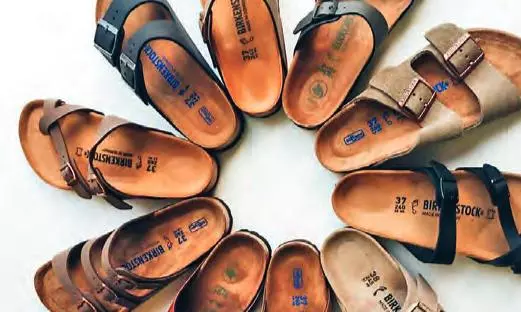The Birkenstock debate: Too ordinary to be art?
Germany’s top Court says Birkenstock sandals aren’t art. Do function and mass appeal make the design less artistic?

Are Birkenstocks just too common to be considered art? That’s the question stirring up debate after Germany’s Federal Court of Justice ruled that the iconic sandals aren’t works of applied art, shutting down Birkenstock’s claim for copyright protection. The Court reasoned that their design is dictated by functionality, not artistic intent. But, does an object’s ubiquity strip it of artistic value? After all, these sandals have been gracing the feet of dads who aim for casual dressing, top fashion models, and just about everyone in between.
Art and impact
“Art isn’t just about rarity but about intent and impact,” says artist Juhi Mydra. “Birkenstocks have a distinct, recognisable design that has endured for decades. If we say they aren’t art just because they’re practical, where does that leave something like Bauhaus design, which was built on the idea that function and beauty go hand-in-hand?”
(She was referring to a movement which has significantly influenced modern design.)
For Juhi, the debate isn’t just about footwear but how we perceive creativity in the everyday. “We celebrate minimalism in architecture, in furniture, in graphic design, but when it comes to fashion, we still cling to the idea that something has to be rare or extravagant to be artistic,” she notes.
The mundane vs. the exclusive
Malvika Agarwal, founder of Chal Shoes, has a different view. “There’s a reason we see limited-edition sneakers showcased in galleries and not mass-produced footwear,” she says. “Exclusivity gives objects an aura. Birkenstocks are great, but they’re everywhere. When something is that common, it stops feeling special.”
She likens it to the difference between a handmade, limited-edition leather bag and a factory-made one. “Both can be well-crafted, but only one has that intangible ‘artistic’ quality.”
In her view, “It’s not just about design, as its focus hinges on scarcity, storytelling, and desirability.”
Amrit Sethia, VP of lingerie brand SOIE adds that the definition of art in fashion is continually evolving. “A few decades ago, sneakers weren’t considered high fashion, but now collaborations between artists and brands sell for thousands of dollars. Who’s to say Birkenstocks won’t have their artistic moment if someone reframes them as collectible pieces?”
Sethia believes context matters. “It’s about who’s looking at it and how it’s being framed. If a fashion house took the basic Birkenstock silhouette and added hand-painted details or unusual materials, suddenly it would be a coveted piece of wearable art.”
Maybe, we also need to rethink art, notes designer Rooma Mehta. “Art has traditionally been seen as something restrictive, something only a select few can access. If art is about expression, then why shouldn’t a well-designed, functional product like Birkenstocks be considered part of that conversation?”
So, is artistic status about design, exclusivity, or simply how we choose to see things? Maybe Birkenstocks are just practical shoes. Or maybe, like all great designs, they’re a form of art hiding in plain sight — one that doesn’t need a gallery to prove its worth.
Mehta also questions whether art has to be static. “Fashion lives and moves with people. Maybe Birks don’t fit into the traditional idea of art, but they do shape culture. Isn’t that just as valuable?” she asks.

